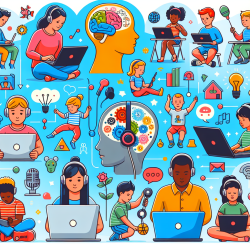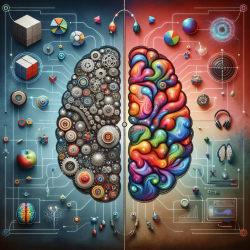As practitioners in the field of speech-language pathology, it is imperative to continuously improve our methods and strategies to enhance the outcomes for children. The recent article "Annual Research Review: Educational neuroscience: progress and prospects" by Thomas, Ansari, and Knowland (2019) provides critical insights that can be directly applied to our practice. This interdisciplinary research field aims to translate findings on neural mechanisms of learning into educational practice and policy, and to understand the effects of education on the brain.
Educational neuroscience operates through two primary pathways: direct and indirect. The direct pathway considers the brain as a biological organ that needs to be in optimal condition to learn, encompassing aspects such as brain health, nutrition, and sleep. The indirect pathway involves how neuroscience shapes psychological theory, which in turn influences educational practices.
Implementing Neuroscience Insights in Online Therapy
For practitioners providing online therapy services, understanding and integrating these insights can significantly enhance the effectiveness of interventions. Here are some practical ways to apply educational neuroscience in online therapy:
- Brain Health: Encourage practices that enhance brain health, such as regular physical activity, adequate sleep, and proper nutrition. Research shows that these factors can improve cognitive performance and learning outcomes (Ruiz-Ariza et al., 2017; Jiang et al., 2011).
- Executive Function Training: Focus on activities that enhance executive functions, such as working memory, cognitive flexibility, and inhibitory control. These skills are strongly predictive of academic achievement and can be improved through targeted interventions (Diamond, 2013).
- Emotion Regulation: Incorporate techniques that help children regulate their emotions, such as mindfulness and relaxation exercises. Effective emotion regulation is crucial for creating a conducive learning environment and can positively impact academic performance (McRae, 2016).
- Addressing Developmental Disorders: Utilize neuroscience-based approaches to understand and address developmental disorders like dyslexia, dyscalculia, and ADHD. Identifying the underlying neural mechanisms can inform more effective and targeted interventions (Butterworth et al., 2011; Shaw et al., 2013).
Encouraging Further Research
While implementing these strategies can provide immediate benefits, it is equally important to stay informed about ongoing research in educational neuroscience. Practitioners should actively seek out and engage with new findings to continuously refine their methods. Collaborating with researchers and participating in studies can also contribute to the growing body of knowledge in this field.
To read the original research paper, please follow this link: Annual Research Review: Educational neuroscience: progress and prospects.










